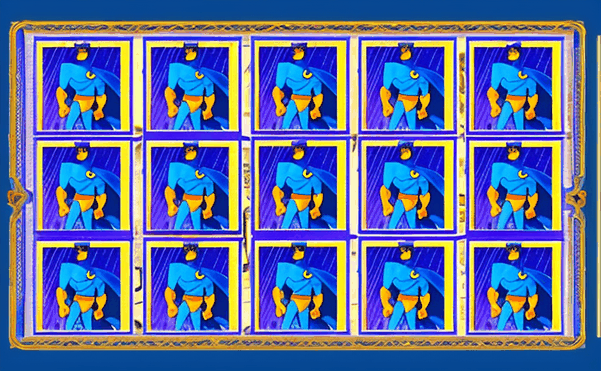The natural world has long served as a boundless source of inspiration for creative industries, especially in the realm of game design. From the aesthetics of landscapes to intricate behaviors of animals, natural phenomena influence both the mechanics and visual appeal of modern video games. Understanding the biological principles underpinning these phenomena enables developers to craft immersive and innovative experiences. For instance, contemporary titles like play CR2 exemplify how natural behaviors can be translated into engaging gameplay mechanics, highlighting the timeless synergy between biology and gaming.
Introduction: The Intersection of Nature and Game Design
Natural phenomena significantly influence game mechanics and aesthetics, offering both functional inspiration and visual richness. For example, ecosystems inform the development of complex, self-sustaining worlds in simulation games, while animal behaviors inspire NPC (non-player character) interactions that feel authentic and organic. Recognizing these biological influences allows developers to create more immersive environments that resonate with players’ innate understanding of nature.
Understanding biological principles is essential for innovation in gaming. Concepts like adaptation, learning, and survival are not only fundamental to biology but also serve as frameworks for designing game mechanics that challenge and engage players. For instance, incorporating natural behaviors such as flocking or predation can lead to more dynamic and unpredictable gameplay experiences.
A modern example illustrating this approach is play CR2. This game demonstrates how natural flocking, imprinting, and movement patterns of chickens are translated into engaging mechanics and AI behaviors, showcasing the timeless relevance of biological principles in contemporary game design.
Fundamental Biological Principles Shaping Game Mechanics
Imprinting and Learning
Imprinting is a critical early-life process where animals develop attachments and preferences that influence their future behaviors. In game design, this principle is utilized to create character development arcs or learning curves. For example, AI characters can be programmed to adapt based on player interactions, mimicking the way animals imprint on their environment or their caregivers. This fosters a sense of realism and encourages players to develop strategies based on evolving behaviors.
Adaptation and Evolution
Biological adaptation allows species to survive changing environments through genetic variations. Translating this into game mechanics involves creating dynamic worlds that respond to player actions or evolving conditions. Procedural generation algorithms, inspired by evolutionary processes, generate terrain, ecosystems, or NPC behaviors that adapt over time, keeping gameplay fresh and challenging. This approach echoes the natural evolution seen in species adapting to their habitats, fostering a more immersive experience.
Predation and Survival Strategies
Predation is a fundamental survival mechanism in nature, shaping behaviors and ecosystems. In games, mechanics such as stealth, hunting, and defense draw directly from these survival strategies. Incorporating predator-prey dynamics creates tension and challenge, requiring players to employ tactics akin to animals in the wild. For instance, predator AI can be designed based on natural stalking behaviors, making encounters more realistic and engaging.
Natural Patterns and Algorithms in Game Development
Biomimicry in Pathfinding and Movement Algorithms
Biomimicry involves mimicking biological systems to solve engineering problems. In pathfinding, algorithms inspired by ant colonies or bird flocking patterns optimize NPC movement. For example, the Ant Colony Optimization algorithm simulates how ants find the shortest path to food sources, which is used to navigate complex terrains efficiently. Such algorithms enhance realism and computational efficiency, leading to more natural NPC behaviors.
Fractal Geometry and Procedural Terrain Generation
Fractal geometry describes self-similar patterns found in nature, such as coastlines, mountain ranges, and clouds. Procedural terrain generation leverages fractal algorithms to create realistic landscapes that are both diverse and infinitely expandable. This method reduces manual design effort while maintaining natural aesthetics, enabling expansive worlds that mirror Earth’s complexity.
Swarm Intelligence and Group Behaviors in NPCs
Swarm intelligence models how groups of animals, such as insect colonies or bird flocks, coordinate actions without centralized control. Implementing these principles in NPC behaviors results in more believable group dynamics, such as synchronized movement or collective decision-making. This enhances immersion, as players observe naturalistic social behaviors that mirror real ecosystems.
Case Study: «Chicken Road 2» as a Reflection of Natural Behaviors
Imprinting and AI Behavior
In «Chicken Road 2», chick imprinting influences how AI-controlled chickens respond to player actions and environmental cues. Similar to real-world imprinting, young chickens in the game form attachments to certain objects or figures, affecting their movement and interactions. This creates nuanced AI behaviors that feel organic and enhance player engagement.
Visual and Mechanical Flock Dynamics
The game’s visual design draws inspiration from natural flocking patterns seen in bird groups. Mechanics such as alignment, separation, and cohesion—core principles of flocking algorithms—are used to animate groups of chickens moving in harmonious formations. These behaviors not only add visual appeal but also inform gameplay, such as guiding player decisions or managing multiple units efficiently.
Early-Life Learning and Gameplay Progression
The game incorporates early-life learning mechanics, where player actions influence the development of AI characters, mirroring biological learning processes. Tutorial stages and progression systems are designed to mimic how animals learn behaviors over time, making the gameplay experience more intuitive and reflective of natural development patterns.
Technological Advances Enabling Nature-Inspired Design
WebGL and Real-Time Rendering
Modern rendering technologies like WebGL facilitate real-time visualization of complex natural environments at high frame rates, such as 60 FPS. This capability allows developers to craft visually rich ecosystems that respond dynamically to player interactions, making natural worlds more accessible and immersive across platforms.
Simulation Software and Biologically-Inspired Algorithms
Advanced simulation tools enable the modeling of biological systems, from flocking to predator-prey interactions. These tools help developers test and refine algorithms that mimic real-world behaviors, ensuring authenticity and enhancing the educational value of games inspired by nature.
Hardware Improvements and Complexity
Enhanced hardware, including powerful GPUs and CPUs, allows for rendering highly detailed natural environments with complex interactions. This technological progress makes it possible to simulate ecosystems with a level of fidelity that was previously unattainable, fostering deeper player immersion.
Non-Obvious Connections: Deepening the Understanding of Nature’s Role in Game Design
Ecological Systems and Game Ecosystems
Designing game ecosystems inspired by real ecological networks involves understanding food chains, predator-prey relationships, and resource cycles. By mirroring these systems, developers can create worlds that evolve naturally, providing players with rich, believable environments that encourage strategic thinking and ecological literacy.
Feedback Loops and Self-Sustaining Worlds
Natural feedback mechanisms—such as population controls or resource regeneration—are vital for creating immersive, self-sustaining game worlds. Incorporating these principles ensures that ecosystems remain balanced and dynamic, enhancing long-term engagement and realism.
Ethical Considerations
“Replicating real ecosystems and animals in games requires careful ethical consideration to avoid misrepresentation and ensure respect for biodiversity.” — Dr. Jane Goodwin, Ecologist
From Nature to Innovation: Future Trends in Game Design Inspired by Biology
AI and Machine Learning
Emerging AI techniques, including machine learning, enable games to simulate complex natural behaviors more accurately. These technologies allow NPCs to learn and adapt dynamically, mimicking real animals’ decision-making processes and creating unpredictable, lifelike interactions.
Bio-Inspired Procedural Content Generation
Procedural algorithms inspired by biological growth patterns—such as branching fractals or cellular automata—offer new possibilities for generating landscapes, flora, and fauna. These methods produce diverse, realistic environments that evolve uniquely in each playthrough, enhancing replayability and immersion.
Role of Natural Sciences
Interdisciplinary research combining biology, ecology, and computational science continues to inform game development. As our understanding of natural systems deepens, so does the potential for creating richer, more authentic virtual worlds that educate and entertain simultaneously.
Conclusion: Embracing Nature as a Creative Partner in Game Development
The intersection of biology and game design offers vast opportunities for innovation. By studying natural principles—from flocking and imprinting to ecosystem dynamics—developers can craft experiences that are not only entertaining but also educational and thought-provoking. As technological advances continue to make natural complexity more accessible, the potential for creating truly immersive worlds inspired by nature grows exponentially.
We encourage game creators to look to the natural world as a creative partner, leveraging its principles to push the boundaries of what is possible in virtual environments. The ongoing synergy between biological sciences and game development promises a future where digital worlds are as intricate and vibrant as the ecosystems they emulate.


